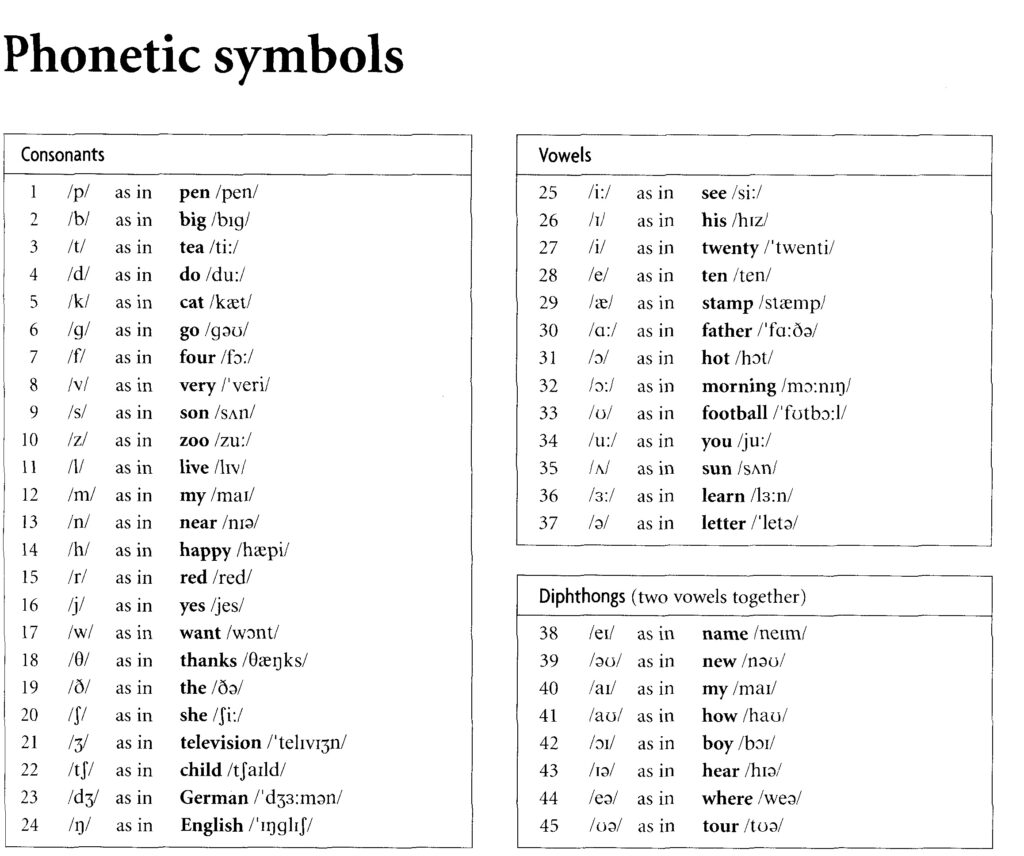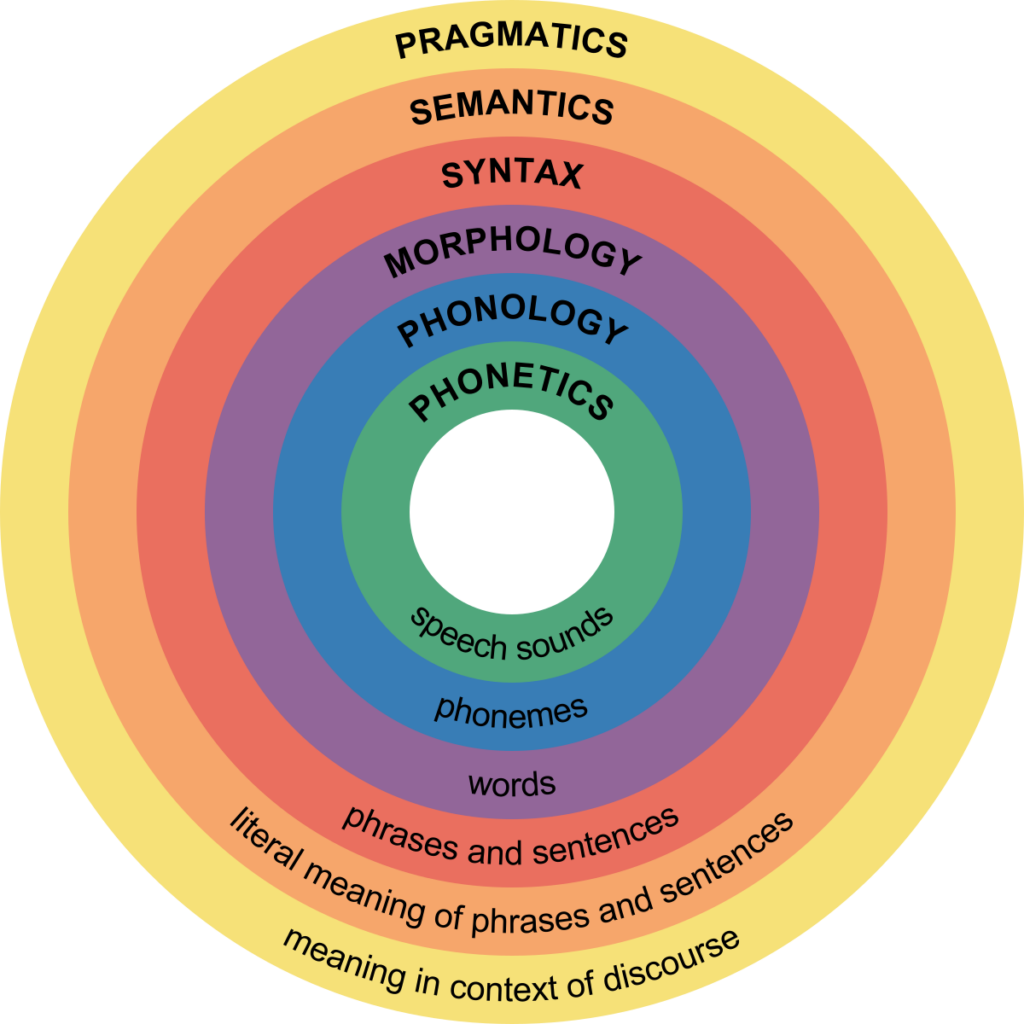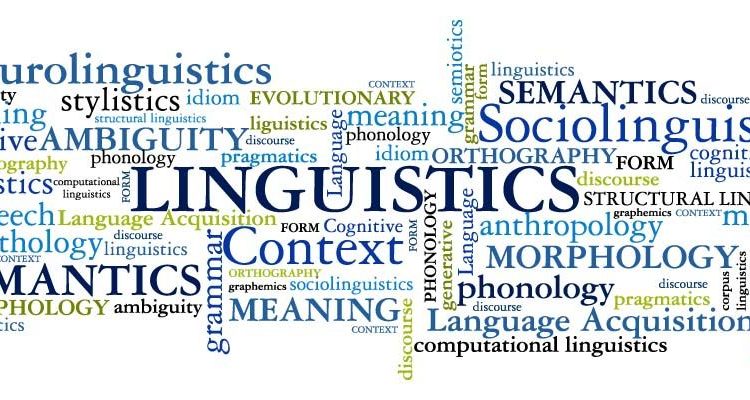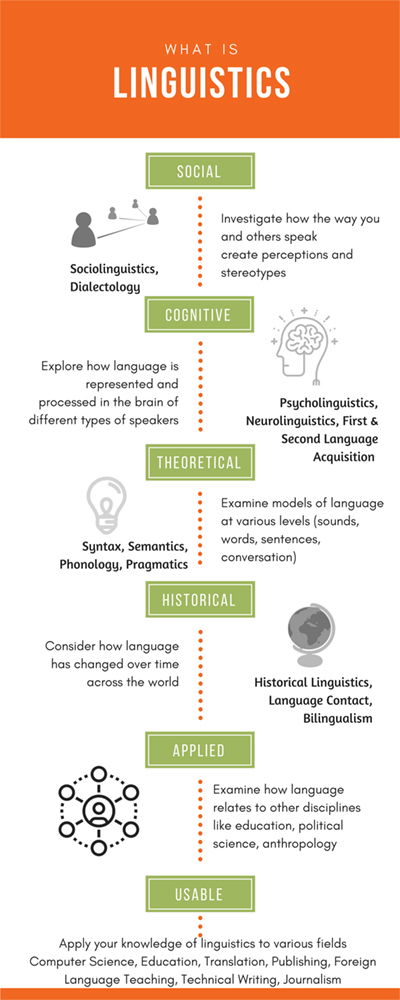Linguistics
Linguistics and Language Learning
Linguistics is the scientific study of language and its various structural components including; phonology, morphology, syntax, semantics, and pragmatics. The various branches of linguistics are vast and expansive. Among the many fields are:
-
- Sociolinguistics
- Psycholinguistics
- Neurolinguistics
- Historical linguistics
- Applied linguistics
- Comparative linguistics
- Theoretical linguistics
- Anthropological linguistics
- Geographical linguistics
- Clinical linguistics
- Evolutionary linguistics
- Dialectology
- Computational linguistics
- Forensic linguistics
There are other fields that include a dimension of linguistics such as forensic science (forensic linguistics) and computer science (computational linguistics). For this reason, linguistics makes an excellent gateway undergraduate major for students who plan to go on to graduate or professional school.
Modern linguistics uses primarily two approaches or perspectives for research and inquiry; humanistic linguistics and biological linguistics.

Using Linguistics as a tool for Teaching
As a Spanish language teacher, I did not include linguistics as a component or even a sidebar for any of my lessons. There may have been times I invoked a linguistic fact to enhance the explanation of a language or linguistic phenomenon, but in general, I never felt that teaching linguistics was a good or even appropriate strategy in basic language courses. The main reason, I adopted this view is because of the limited amount of time and contact hours needed to cover all of the material and to ensure adequate preparation and skill development to advance students to the next level.
However, I believe linguistics bring more pedagogical value to ESL teaching than to Spanish language teaching for several reasons:
| ESL | Spanish Language learners |
|
|
|
|
|
|
|
|
|
|
|
|

"A language is not just words. It's a culture, a tradition, a unification of a community, a whole history that creates what a community is. It's all embodied in a language."
- Noam Chomsky


Created by the Univeristy of Tennessee.